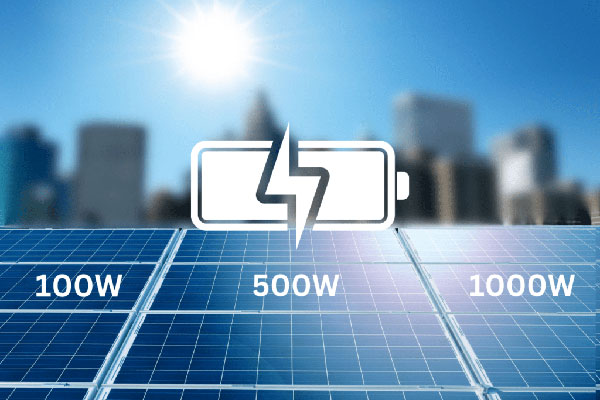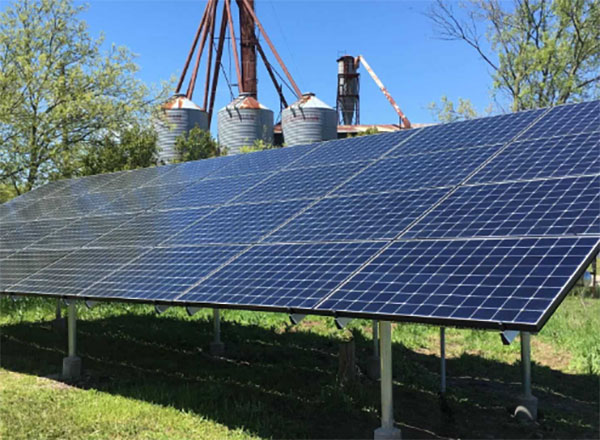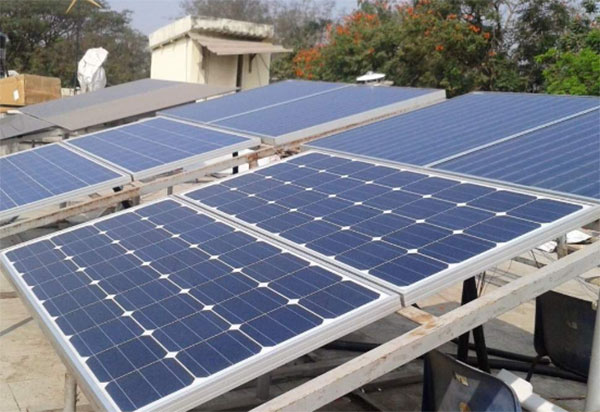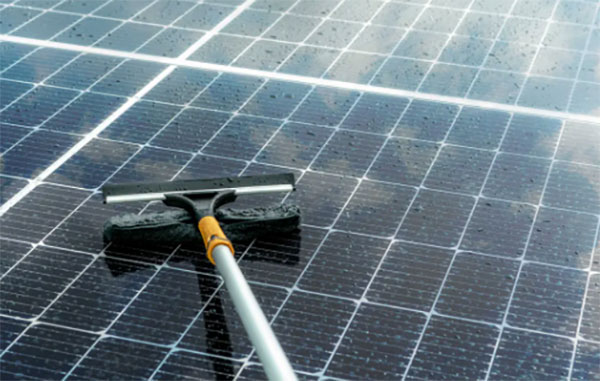Introduction
Solar panels are one of the most important factors playing in favour of renewable energy resources. They have the capacity of turning the sun’s energy into electricity, which makes their use environmentally friendly and sustainable. This assignment aims to inform more precisely on how solar panels work turning solar energy into electricity and which factors other than the length of exposure to the sun hours and the power of the panels themselves contribute to the total amount of the electricity produced by them.
Solar Panel Wattage and Power Generation
First of all, solar panels are measured by their wattage. When at best capacity, for instance, a solar panel with 300W potential can on a sunny day capacity of producing 300W of solar power. Unfortunately, the reasons why the actual solar power generated, by one and the same panel, would not achieve the aforementioned capacity may vary from one panel to another. For one thing, the nature of the light directed at the solar panels can prove an influential factor. The heat and the angle of contribution would make a big difference in particular. Also, the degree to which it is warm can be determinant as how much power the best solar panels can generate on a particular day. Therefore, to assess how much power they can generate on a daily basis, when the best conditions are met, the user has to multiply the wattage of the solar panel by the number of hours with a peak electricity potential light that it receives. In conclusion, it is possible to name illumination, as the key factor all the other factors of influence of the degree to which the panels can generate the electricity are. For instance, in a desert versus in a forest.
Panel Angle and Orientation
The angle and direction that a solar panel is facing are important when it comes to its power production. These are typically installed to ensure that the sunlight can reach the panel for as long as possible, which requires the installation of them at a particular angle so that the sunlight can reach it through the day. In the Northern Hemisphere, a solar panel is typically installed facing south.
Temperature
Solar panels are the most efficient in regular temperatures. They are still reality during hot days, however, extreme heats can reduce their efficiency. While this might not be a problem in the case of residences – no other type of property would suffer from a lower power output during the summer months – the practical differences in the case of a solar cells efficiency. At the same time, well below freezing temperatures can increase its efficiency slightly, thus there wouldn’t be a big difference for a residence in the case of temperatures below zero, there would also be the problem that the solar panels are covered in snow and ice.
Shading
Any obstruction placed between a solar cell and the light source can significantly reduce the power output of the cell. Therefore, it is vital to ensure that a solar panel is installed somewhere where there are no permanent shadows.
Measuring Energy Output in Kilowatt-Hours
The monthly energy production of a solar panel is typically measured in kilowatt-hours, which is more of a practical unit of measurement for this application. To calculate the monthly energy production, one would only need to multiply the day-long watt-hour production by the number of days in a month. For instance, a 300-watt solar panel producing 1,500 watt-hours daily would produce around 45,000 watt-hours or 45 kilowatt-hours of electricity in the case of a 30-day month. This is extremely important in determining the potential differences in the electricity bill and the appropriate size of the solar panel array, so the property producing it would be satisfied.
Solar panels are affected by the environment they are placed in
One main factor is the availability of sunlight; the more direct sunlight the solar panel receives the more electricity it will generate. In areas with high annual solar irradiance, such as the Southwest United States, solar panels can generate up to 20% more electricity than in a less sunny place. The other main environmental factor is the temperature. Although solar panels work in a wide range of temperatures, their efficiency decreases with increasing temperatures. It is estimated that at temperatures above 25°C which is 77°F, the efficiency of the solar panel’s output is reduced. This is because, at higher temperatures, the semiconductor material in the panels become more resistant to the flow of electrons and hence they are less capable of converting sunlight into electricity.
Roof orientation and panel placement
The orientation and placement of the solar panels on a roof are also important factors that affect the energy output of a solar panel. The roof orientation is the direction in which the solar panels are faced. In the Northern Hemisphere, panels facing south will receive the most sunlight because they will be directly in front of the sun. East and west-facing panels can be even better in some cases, such as in places where the afternoon sun is strong. Another important aspect is the panel’s tilt angle. The best tilt for a roof varies by Geographical position and season, but generally, the panels should be tilted at an angle close to the latitude of your location. For example, panels in a 30-degree latitude region should be tilted at around 30 degrees to maximize the amount of sunlight that hits them throughout the year.
Types of solar panels and efficiency rate
Solar panels also come in different types of technologies and each of these has its efficiency rate and output. There are three main types of solar panels, which are monocrystalline, polycrystalline, and thin-film.
Monocrystalline: Monocrystalline panels are made from a single crystal structure and usually the most efficient ones. An efficiency rate of these panels ranges from 15% to 20%. Additionally, these panels have sleek and uniform looks since they are cut from a single silicon crystal.
Polycrystalline: Polycrystalline panels are made from multiple crystal structures and are less efficient than monocrystalline ones. The efficiency of these panels ranges from 13% to 16%. However, they are often cheaper and more available than monocrystalline ones, which is why this type of solar panels is relatively frequent.
Thin-film: Thin-film panels use a layer of photovoltaic material to convert sunlight into electricity. They also tend to have a low efficiency rate, ranging from 10% to 12%. Despite the lowest efficiency rate, thin-film panels are relatively cheaper, which makes them feasible for large-scale industrial use.
Once you have understood what types of solar panels are available in the market and what their efficiency rate is, it is time to determine the best option for you. If let’s say, you are trying to install solar panels on your rooftop in a region where there is mostly constant sun, then thin-film panels will be the most beneficial since they are the cheapest and will be efficient enough for your purposes. Calculating energy production in various conditions is extremely important if you want to install the right type of solar panels.
Estimating Daily Output of 1000W Solar Panels
When estimating daily output of 1000W solar panels, you should consider calculating energy production in different conditions. Some of the most important aspects of the calculation are the amount of sunlight, temperature, and shading.
In an ideal situation with full sun and optimal conditions, a 1000W solar panel could produce 1000 watt-hours per hour. While effective sunlight hours depend on a specific location and time of year, a solar panel could generate 5000 Wh, or 5 kWh, of energy daily in an area facing five peak sunlight hours. To make a more precise assumption, it would be necessary to consider solar irradiance of a place which is measured in W/m². It often reaches 1000 Wm² in sunlight, and the power generation can be estimated at 15%, or 150W per square meter. Because a 1000W solar panel covers approximately 1 square meter, the daily production may be estimated as 150 * 5 * 1 m² = 750 Wh, or 0.75 kWh.
Real-world applications and expectations
In terms of understanding the real-world applications and expectations of a 1000W panel, it is critical to keep in mind that solar energy can vary in its production. While in the best conditions it may produce 5000 Wh or 5 kWh in a day, the actual rate may be different because of accidents of cloud cover, dust on the panels, or wrong angle. For most household usages, a 1000W panel system is already enough to make a substantial difference in an electricity bill. If an average family consumes 20 kWh of electricity per day, and there is a 1000W solar panels system, they could potentially generate about 5-6 kWh per day. For industrial applications, the scale is much bigger with hundreds and thousands of square meters of rooftop at factories or solar farms. Companies that go for the 1000W panels greatly reduce their engagement with grid electricity, which allows them to save on energy in perspective and reduce carbon footprint at the same time.
Implications for home and industrial use
The implications for using 1000W solar panels are both capitulating for home and industrial use. For a home setting, the benefit is the reduction of electricity costs. At the same time, solar panels have a reduced hazardous effect to the living environment. A home set to benefit from this is reduced dependency on fossil energy sources. By using the solar energy in electricity generation, homeowners will be helping in the mitigation of climate change. In an industrial setting, the use of 1000W solar panels would be beneficial to reduce costs. The energy demand in industries is very high and companies have to look for alternatives that are sustainable. Using solar panels would save industries a lot of money. For example, Tesla Ding can use this to save an estimation of $1,552,604 monthly and $18,632,456 annually. Investments in solar energy would benefit in image-boosting. The company will appear to be in the frontline in environmental conservation. The first step before installing solar panels is to do a thorough site assessment to know the amount of solar power being produced and the appropriate size and design of a solar system. This way the system will produce the highest amount possible of a sustainable and cheaper means of energy.
Techniques for proper solar panel use
Some of the techniques that can maximize solar panel use are panel angling and using the right mounting materials. It is important to angle the solar panel in relation to the position of the sun and the season of the year. For the winter season in the northerly hemisphere, a shallower angle is appropriate. It is estimated that as much as 15% improvement can be achieved by practicing proper panel angling.
I would like to suggest the technique of shading management. Even though there can be any objects for shading, some research has proved that shading of even a 10% of a panel can result in efficiency loss of 50% or more. It means that in order to maximize the efficiency, solar panels must be placed in the location without any obstructions. In some cases, it can even happen that some trees, for example, would need to be cut, or some structures, such as a garage at home, would need to be moved in order not to shade the entire system of solar panels.
At the same time, monitoring and tracking can also be an effective part of the strategy to cauterize the reasons of lowering efficiency. In particular, it will be advantageous to monitor how each panel is performing and track the energy production. If there is one panel out of five which is not operating properly, it will be quickly identified on the monitoring software. In this case, the reason of that can be quickly investigated, and the problem with the panel will be fixed. In order to maximize the efficiency, it will also be very important to use some maintenance methods and technological advancements.
The continuation of the latter argument relates to the use of some technological advancements. In particular, it will be advantageous to use microinverters instead of string inverters. Microinverters are cheaper, and they can be fixed right to the back of each panel. At the same time, they can also optimize the efficiency of each panel and perform the function of making even the panels of old systems operate with high efficiency.
At the same time, given the sustainability of their lifespan, both in the short and long term, the quality of the installation is a fundamental aspect that depends on the experience and knowledge of professionals. For this reason, the long-term return from investing in the service of a reliable company for installing solar panels using best in Australia is guaranteed. The quality of the service depends precisely on the professionalism of the company, which guarantees the efficiency of this choice. While, in any case, installation services will help you obtain know-how on how to best maintain the solar power installation with the help of modern maintenance services.
Similarly, the level of return from investing in a smart solar system depends on the characteristics of the technology because the use of systems with advanced monitoring and optimization features ensures an increase in revenues. It is true, though, that the wider application of prefabricated PV technology, in turn, increases the efficiency and revenue potential of solar panels. But, in each case, the payback period is directly affected by whether you have an efficient system that is aware of any glitches and immediate opportunities for optimization. An important point that can affect the choice is the thoughtfulness of the future and care for the surrounding world and the possibility of using renewable energy resources that allow us to reduce the negative impact on the environment to a minimum. Following the techniques and technologies, you ensure that your solar panel system will work as efficiently as possible to provide considerable energy savings and benefits for years to come.






